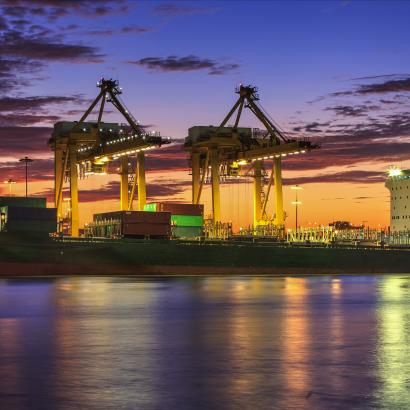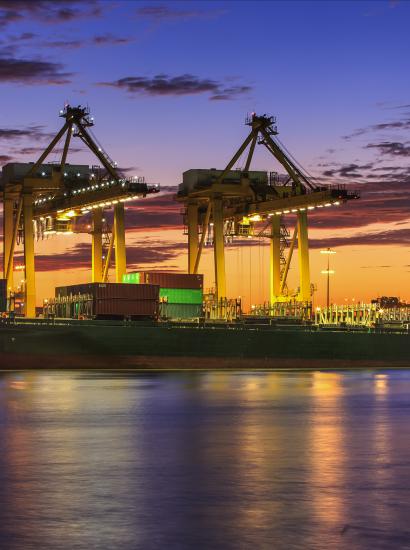- Economics
- Trade
- Answering Challenges to Advanced Economies
When economists are polled on whether free trade creates net benefits for an economy, the vast majority, sometimes over 90 percent, answer that it does. Politicians, though, are another story. In 2018, President Trump proudly called himself “tariff man” and was true to the label: he imposed many tariffs on imports, even though one of the usual, if mistaken, rationales used to justify restrictions on imports, high unemployment, did not apply. Many economists hoped that whatever other harms President Biden might impose, he would reverse all or most of Trump’s tariffs. Although Biden has had over three years to reverse those measures, he hasn’t done much.
It was only natural, then, to wonder how Biden’s economists at the Council of Economic Advisers (CEA) would discuss trade. They could ignore trade, always an option for economists who want to maintain their professional integrity but not dump on the boss. They could call for reducing tariffs: although that would be nice, it might cause some of them to lose their jobs or, at least, be ignored. Or they could talk about the benefits of trade without addressing whether it should be restricted or liberated by tariff reductions. The last, discussing the benefits, is probably the least bad choice. Fortunately, that’s the choice they made in the 2024 Economic Report of the President.
Who gains the most from trade?
One of the biggest misunderstandings non-economists have about trade is that it disproportionately benefits the rich. In 2016, for example, Mark Kleiman, a professor of public policy at UCLA, wrote, “But the bottom line is that all of the gains, not merely from trade but from economic growth, have been concentrated in the hands of a relative few.”
When I read that at the time, Kleiman’s statement seemed to go against much of what I had learned in economics and all that I had observed in the real world. It turns out that I was right. In percentage terms, the opposite is true: trade disproportionately benefits low-income people. Although trade may hurt various low-income people in their role as competing workers, it helps lower-income people, as consumers, proportionally more than high-income people. The reason is that the goods that are traded tend to be those that are a larger proportion of a lower-income household’s income.
Think about who shops at Walmart and where Walmart buys many of the items it sells. Lower-income people are disproportionately represented among Walmart shoppers and many of the items, typically low-end, that Walmart sells, are imported, especially from China. One of the important items is food. In a 2016 e-mail, economist Amit K. Khandelwal, then at Columbia University, told me the gains that would be captured by various income groups, based on 2014 data, if prices for imports were to fall by 5 percent. For food, people at the 10th percentile would have an annual gain of 0.39 percent of income. People in the 90th percentile and 99th percentile, by contrast, would gain zero. Similarly, a 5 percent price cut for manufactured goods would raise real income for people at the 10th percentile by 0.81 percent and, for people at the 90th and 99th percentile, by only 0.22 percent and 0.10 percent, respectively.
In 2016, I computed the gains from freer trade in clothing. The downside is that the US economy lost 650,000 apparel jobs between 1997 and 2007, which is when Chinese imports increased so rapidly. Not all those people found jobs at a pay as much as they earned before. The good news is that, with the increase in international trade, clothing became much cheaper. In his book The Rise and Fall of American Growth, Northwestern University economist Robert J. Gordon reported that between 1980 and 2013, clothing prices fell by an average of 2.6 percent per year. Compounded over that whole period, that’s a 58 percent drop. At the time, households in the bottom two income quintiles had an average after-tax income of $19,266. I computed their gain from lower prices for clothing, both on clothing they would have bought and on the extra clothing they bought because of the lower price. The gain averaged $935 per household. At the time, there were about fifty million households in the lowest two quintiles, so the overall gain was about $46.8 billion annually. Assuming that the 650,000 people who lost their jobs lost as much as $10,000 each per year, which is probably an overestimate, their loss was $6.5 billion, which is less than 15 percent of the gain.
What are the overall gains from the trade we have compared to how we would fare with what economists call “autarky”? Autarky is the hypothetical situation in which we have zero trade with other countries. The CEA economists answer that by drawing on some research by the aforementioned Khandelwal, now at Yale University, and his co-author Pablo D. Fajgelbaum of UCLA. The CEA writes:
The results, showing that trade with China has benefited most Americans’ purchasing power, are consistent with a larger body of evidence on the benefits from trade with all countries—again, with disproportionate benefits accruing to lower-income households. For example, the average US household has been shown to gain 8 percent in purchasing power from trade compared with a counterfactual autarky (Fajgelbaum and Khandelwal 2016). However, the lowest-income US households gain the most, at 69 percent.
They also show that the households in the highest 10 percent have only a 4 percent gain in well-being relative to how they would fare in autarky.
Gains on inputs
International trade is not only in the form of final consumer goods such as food and clothing. Also important are inputs into production. Trump’s tariffs on steel and aluminum hurt US manufacturers that used steel and aluminum as inputs. Cars, anyone?
So, it’s refreshing to see the CEA recognize the importance of inputs. They write:
Global supply chains’ prevalence in US production can also be observed in the high share of intermediate goods or imported input trade in the United States. Industrial supplies (e.g., lumber and steelmaking materials) and capital goods (e.g., drilling equipment)—typically, inputs into final goods—are highly positively correlated with GVC [global value chain] trade and accounted on average for over half of imports between 1992 and 2022. The import share of industrial materials grew more than that of any other product group between 1992 through the onset of the global financial crisis in 2008, showcasing how multinationals’ FDI [foreign direct investment] and the establishment of GVC linkages can support greater trade flows.
Translation: what I said about steel and aluminum applies to other inputs too.
Why do we import so much more than we export?
In 2023, the US expenditures on imports were $3.112 trillion and other countries’ expenditures on our exports were “only” $2.053 trillion. Why is that? Many people will tell you that the reason is that other countries have high tariffs against our exports and we have low tariffs against imports. But it’s hard to find an economist to say that. So, what does drive our trade balance? The CEA states:
The fundamental drivers of a country’s overall trade balance are its relative saving and investment rates—both public and private. Countries with lower domestic saving than domestic investment (likely as a result of low domestic saving rates, high domestic investment rates due to attractive economic opportunities, or a combination of the two) tend to run trade deficits and accompanying current account deficits (where the current account balance is defined as the trade balance plus net foreign investment income plus net transfer payments from foreign income sources like worker remittances and foreign aid). The trade balance typically accounts for the bulk of the current account balance and is highly correlated with it, so, for expositional simplicity, we focus on the trade balance. Trade deficits are necessarily matched by capital and financial account surpluses (the net inflows of foreign lending necessary to finance the trade deficit)—as is the case with the United States.
The CEA slipped a little. The financial account surpluses include not only foreign lending but also purchases of stocks and real assets, and direct investment. The CEA will never say this, given that it represents an administration whose head, Joe Biden, is comfortable with future budget deficits well in excess of $1 trillion, but the big driver of “low domestic savings” is the budget deficit. The good news, though, is that the “attractive economic opportunities” the CEA mentions are still there. That’s one main reason we suck in so much foreign investment.
A disappointment
Although the CEA does a good job of citing the economic literature for virtually all its claims, it disappoints in two ways.
One is its failure to cite, even once, the American economist who has done the most to defend free trade and who is arguably the leading US economist on trade: Douglas Irwin of Dartmouth. That would be a trivial disappointment if it made the same case Irwin makes in his many books and articles. But the lack of a citation to Irwin indicates, I think, the CEA’s less than full-throated defense of free trade.
The other disappointment is its celebration of the US government’s interference in Mexico’s labor market. The CEA states:
Another example [of the Biden-Harris administration’s policy agenda] is the United States–Mexico–Canada Agreement’s Rapid Response Labor Mechanism, which promotes the right of free association and collective bargaining rights by workers. Since 2021, this mechanism has been used to protect labor rights at multiple different facilities, and thus it has had an impact on thousands of workers in Mexico.
Free association is a good thing. But neither the Biden administration nor the CEA shows any awareness that it often conflicts with collective bargaining. Collective bargaining is fine as long as those represented freely choose to be represented. But collective bargaining typically carries with it the compulsion for all workers represented by a union to go along with a bargain rather than make their own agreement with an employer. In such cases, workers’ freedom to associate is violated because freedom to associate necessarily means freedom not to associate.
It’s understandable that both the Biden administration and the CEA favor such collective bargaining. Biden has bragged that he is the most pro-union president in US history. And the chairman of the CEA, Jared Bernstein, came to the administration from the Economic Policy Institute, a Washington-based think tank that receives a substantial amount of funding from labor unions.
Although I have not yet read the rest of the 2024 Economic Report of the President, my guess is that the chapter on international trade and investment is as close as the CEA comes to being pro-market. We should be thankful for that chapter.

















